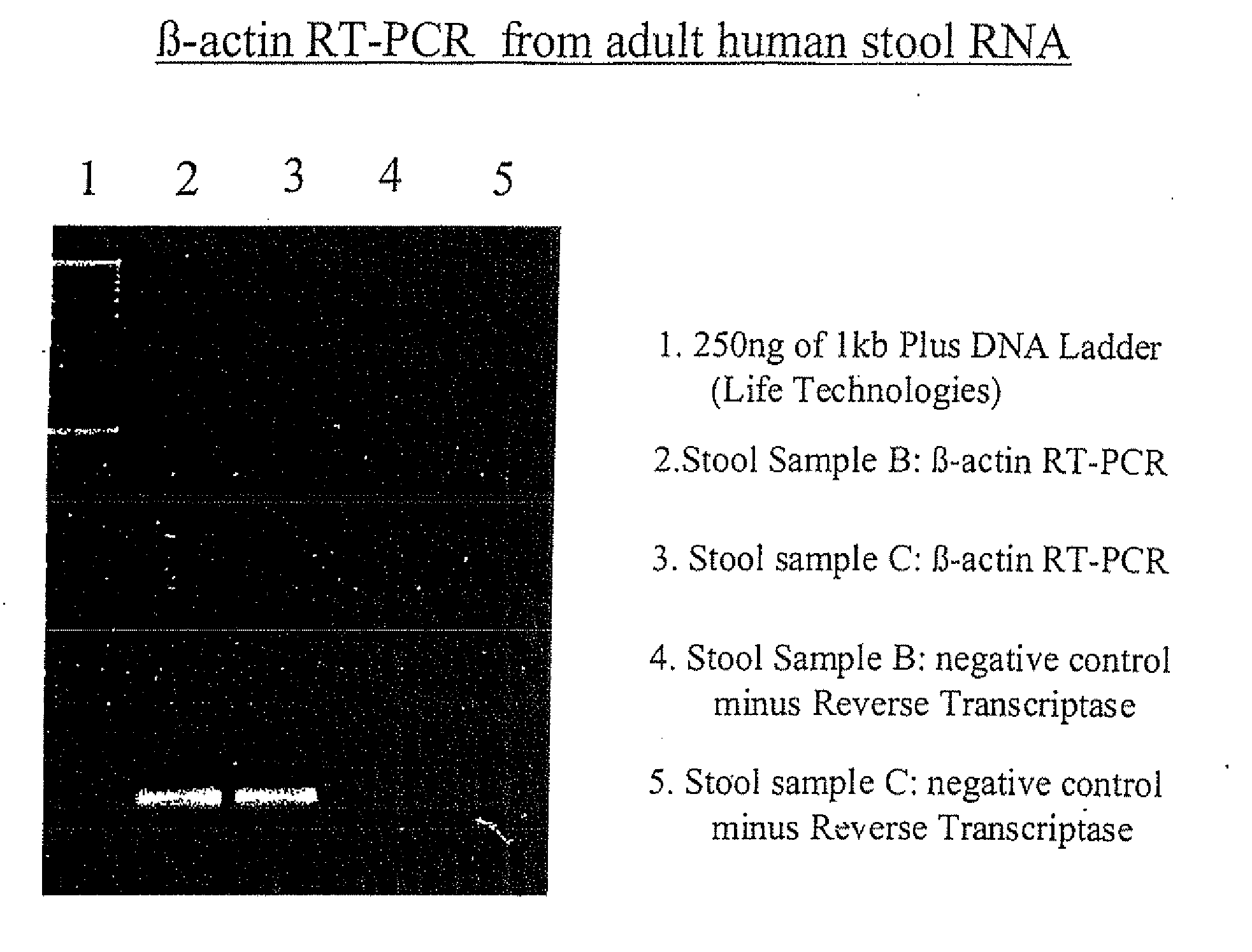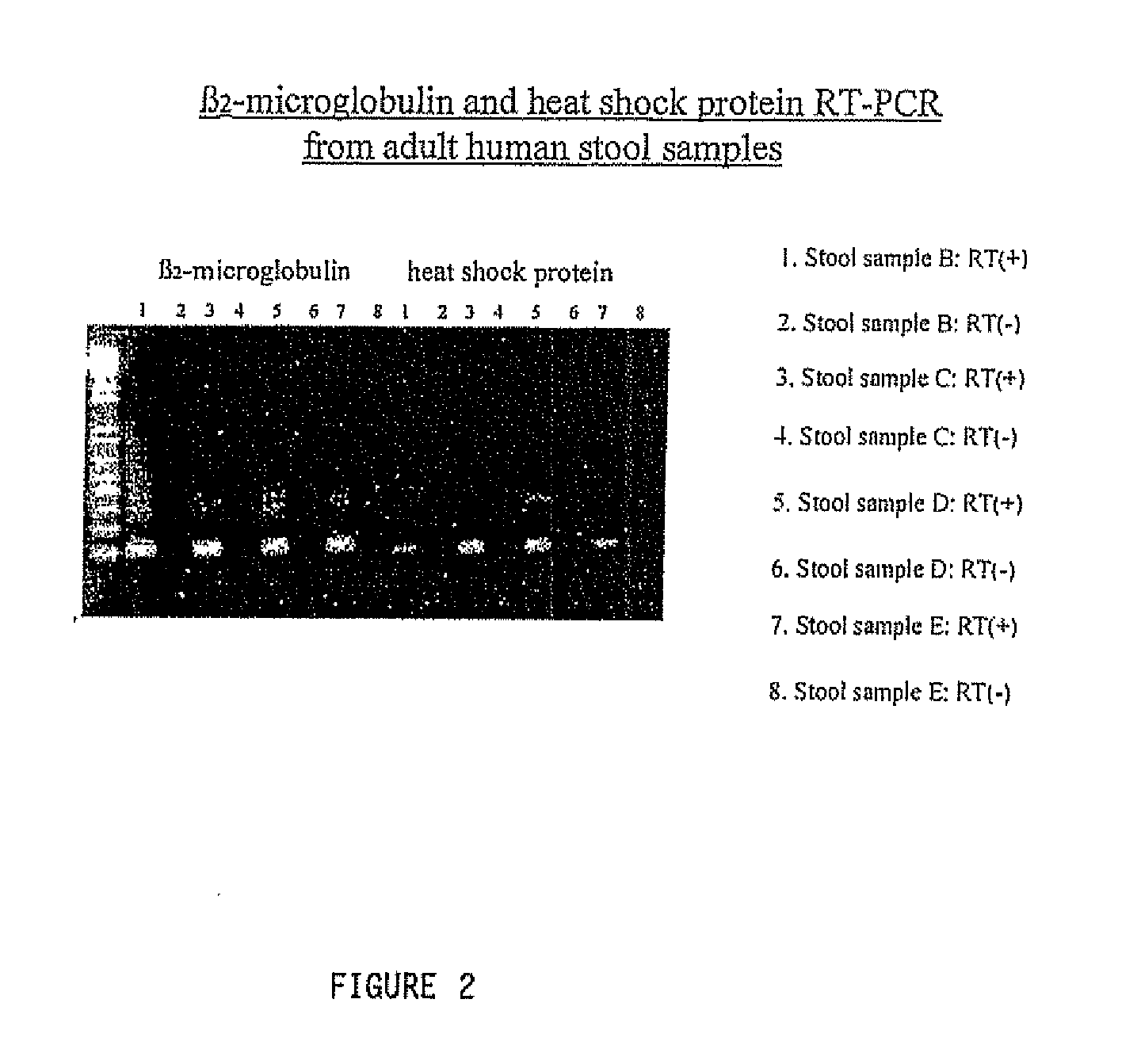Method of isolating nucleic acids from stool samples
- Summary
- Abstract
- Description
- Claims
- Application Information
AI Technical Summary
Benefits of technology
Problems solved by technology
Method used
Image
Examples
example 1
Protocol for Extraction of RNA From Stool Samples
Collection of Samples
[0152]Approximately 2-5 g samples were placed in 20 ml of a solution of 4M guanidine thiocyanate and 20 mM Na-citrate, pH 7.0, dispersed by shaking and stored at room temperature for 24-48 hours before processing. RNA has also been extracted from samples stored at 4° C. for two weeks.
[0153]1. Ensure that sample is dispersed as completely as possible[0154]2. Spin at 3000 rpm for 10 minutes[0155]3. Transfer supernatant to fresh tube and homogenise[0156]4. Add 0.1 volumes 2M NaOAc pH4.0 followed by an equal volume of acid-phenol / CHCl3 (5:1)[0157]5. Vortex well and incubate on ice for 20 min[0158]6. Spin at 10000 rpm for 20 min at 4° C.[0159]7. Recover aqueous phase and extract with an equal volume of CHCl3. (If a visible interface forms perform an additional chloroform extraction)[0160]8. Recover aqueous phase and add 0.5 volume of isopropanol followed by an equivalent volume of 1.2M NaCl / 0.8M Na-citrat...
example 2
Results From the Extraction of RNA From Stool Samples
[0170]RNA has been isolated from the stools of both children and adults who are subject to a wide range of diets. Ten individual samples were analysed.
[0171]Prior to the advent of the present method, there were reports detailed in the literature of RNA isolation methods directed to isolating RNA from human stools. However, Reverse Transcriptase-PCR had not previously been successfully performed on this material.
[0172]The RNA isolated in accordance with these examples has been successfully subjected to Reverse Transcriptase-PCR. FIGS. 1 and 2 demonstrate these results. Specifically, with respect to the β-actin experiment, the correct sized product only appears in the first gel lanes 2 and 3. The weak bands in lanes 3 and 4 represent background. Similarly, the strong bands evident in both the β2-microglobulin and heat shock protein related image represent the expected produce size.
PUM
| Property | Measurement | Unit |
|---|---|---|
| Temperature | aaaaa | aaaaa |
| Temperature | aaaaa | aaaaa |
| Temperature | aaaaa | aaaaa |
Abstract
Description
Claims
Application Information
 Login to View More
Login to View More - R&D
- Intellectual Property
- Life Sciences
- Materials
- Tech Scout
- Unparalleled Data Quality
- Higher Quality Content
- 60% Fewer Hallucinations
Browse by: Latest US Patents, China's latest patents, Technical Efficacy Thesaurus, Application Domain, Technology Topic, Popular Technical Reports.
© 2025 PatSnap. All rights reserved.Legal|Privacy policy|Modern Slavery Act Transparency Statement|Sitemap|About US| Contact US: help@patsnap.com



